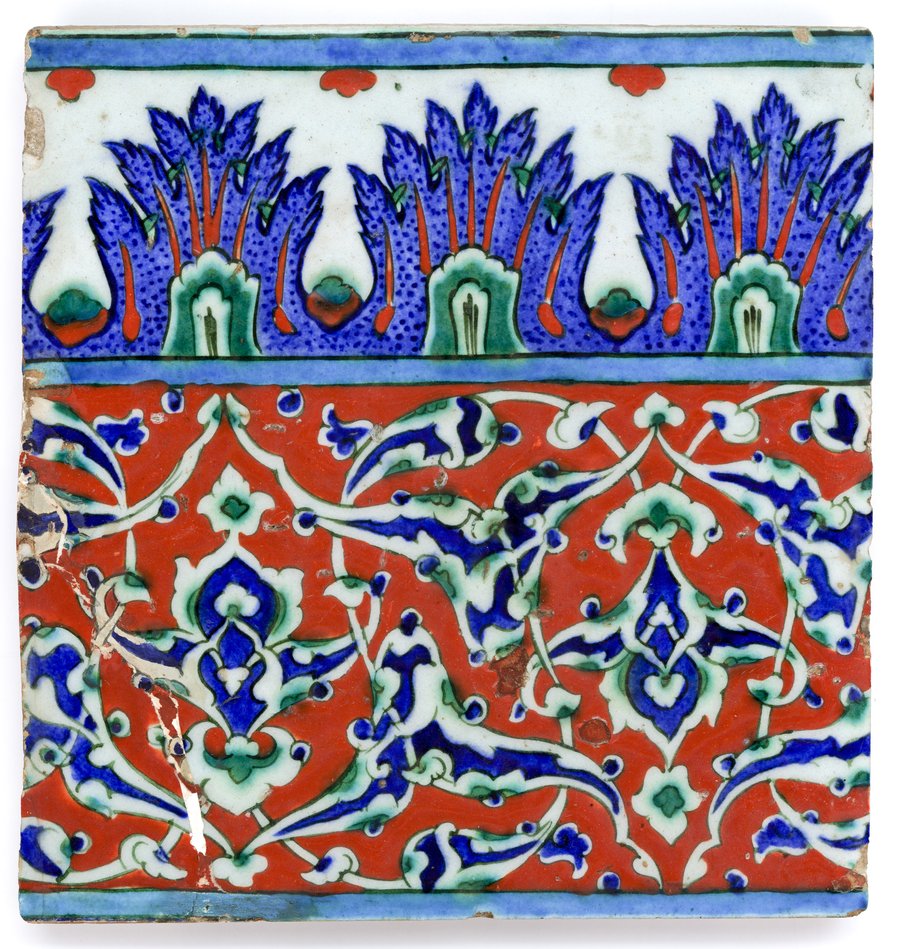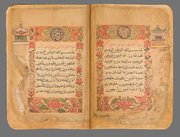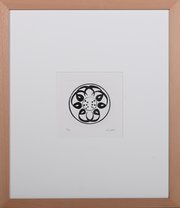
Square Iznik Tile
Museum of Islamic Art
- Title:
- Square Iznik Tile
- Production place:
- Iznik
- Date:
- 1570
- Period:
- Ottoman
- Title:
- Square Iznik Tile
- Production place:
- Iznik
- Date:
- 1570
- Period:
- Ottoman
- Material:
- Fritware, Pigment, Glaze
- Technique:
- Underglaze painting, Glazing
- Dimensions:
- 25.6 × 24.6 cm
Iznik pottery is named after the town of Iznik, in western Anatolia (modern day Turkey), where it was initially made. The earliest evidence of Iznik production occurred during the reign of the Ottoman Sultan Mehmed II (r. 854-886 AH/1451-81 CE), whose appreciation for fine blue and white Chinese Ming porcelains inspired potters to start making similar ceramics.
This square tile dates to the second half of the 10th century AH/16th century CE, when Iznik was revitalised by Sultan Suleiman the Magnificent (r. 926-974 AH/1520-66 CE) who commissioned tiles to decorate his newly built mosque in Istanbul. This period is often considered to be the height of Iznik pottery, when new colours, patterns and forms were introduced, such as fire-red, a technological innovation developed by Iznik potters around the 960s AH/1560s. This tile is divided into two parts separated by a blue band. The upper, narrower part consists of three blue serrated-edged flowers against a white background; while the bottom, wider part is decorated with interlacing white, blue and green arabesques against a dominant fire-red ground.



